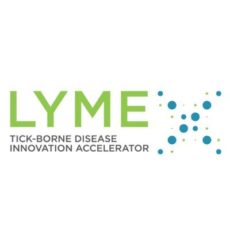
SHARE THIS ARTICLE:
Ten LymeX Diagnostics Prize Phase 1 Winners Announced by HHS and Cohen Foundation
The U.S. Department of Health and Human Services (HHS) and the Steven &  Alexandra Cohen Foundation (Cohen Foundation) have named ten Phase 1 LymeX Diagnostics Prize winners in the LymeX Innovation Accelerator (LymeX) contest created to advance the progress of diagnostics for Lyme disease. Phase 1 of the multiphase competition called on scientific, technical, and clinical experts to present pioneering methodologies for the detection of active Lyme disease infections in humans with the goal of cultivating the advancement of diagnostics toward review by the Food and Drug Administration.
Alexandra Cohen Foundation (Cohen Foundation) have named ten Phase 1 LymeX Diagnostics Prize winners in the LymeX Innovation Accelerator (LymeX) contest created to advance the progress of diagnostics for Lyme disease. Phase 1 of the multiphase competition called on scientific, technical, and clinical experts to present pioneering methodologies for the detection of active Lyme disease infections in humans with the goal of cultivating the advancement of diagnostics toward review by the Food and Drug Administration.
From May to August 2022, Phase 1 received 52 submissions for the detection of active Lyme disease infections in humans. Submissions included techniques such as radiology imaging, genomics sequencing, and microfluidics, and also translated methodologies used in detecting other infectious diseases such as COVID-19. First, technical reviewers assessed this highly ambitious field, and then the competition judging panel evaluated submissions based on official review standards.
The Phase 1 winners listed below will each receive $100,000 and, pending funding, will be invited to take part in a second phase.
- BlueArc Biosciences Inc. Ultra-Sensitive Direct Diagnostic for Early Lyme Disease. A molecular diagnostic blood test for Lyme B. burgdorferi s.l. using innovative polymerase chain reaction (PCR) assay that targets biomarkers for increased accuracy using standard laboratory equipment.
- Drexel University College of Medicine. Glycoproteomic Approach to Lyme Disease Diagnostics. A small-volume serum test using glycan biomarkers to detect active Lyme disease infection, track treatment response, and distinguish between diseases with similar symptoms.
- George Mason University. Borrelia Derived, Sequence-Specific Novel Diagnostic Peptides. A urine direct test that targets absolutely specific protein molecules and would provide direct information about pathogen activity.
- HelixBind Inc. Ultra-Sensitive Direct Detection of Active Borrelia Infections. A test combining novel sample preparation and artificial nucleic acid detection to identify active infection in whole blood, synovial fluid, and cerebrospinal fluid.
- InBios International Inc. Early Lyme Diagnosis Using a Microarray Immunoassay with Machine Learning. An automated, quantified, array-based serum test using machine learning to improve sensitivity in categorizing specimens.
- Massachusetts General Hospital. Cell-free Target Capture Sequencing for the Diagnosis of Lyme Disease. A plasma test depleting human background material from samples and detecting low-abundance nucleic acid from tick-borne pathogens.
- Serimmune Inc. NGS-based Precision Serology for the Diagnosis of Tick-borne Disease. A universal multiplex serum test that incorporates patient-centric surveillance testing, population data, and machine learning to enhance understanding of tick-borne diseases.
- T2 Biosystems Inc. T2Lyme Panel Direct Detection of Active Lyme Disease. A whole blood test designed to directly detect Lyme disease-causing bacteria, providing results in three to five hours with higher accuracy.
- Tufts University. Antiphospholipid Antibodies for Tracking Lyme Disease After Treatment. A serum test targeting a unique antibody that would more accurately identify early infection and allow clinicians to optimize additional treatment.
- Virginia Tech. Detecting Release of Peptidoglycan for Direct Lyme Disease Diagnosis. A test using monoclonal antibodies in conjunction with immuno-PCR to detect a unique B. burgdorferi biomarker in multiple biofluids.
For more information:
Read more on the Lymex Diagnostics Prize website.
Learn more about the current state of Lyme & TBD testing.





